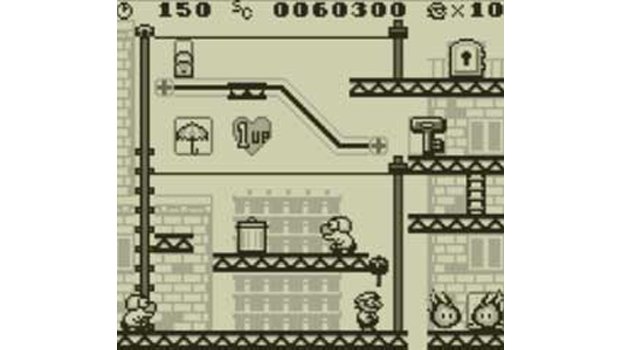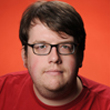Wish Donkey Kong was 20 times bigger? Play Donkey Kong for Game Boy
It's on like... you know...
If you were as inactive as I was growing up, then summer wasn’t a time for swimming or sunshine. That season away from school was for playing games, and that was just as true for vacations. I played a number of portable games on family vacations, but none are as memorable as the Game Boy’s Donkey Kong was in the summer of 1995. I picked it up at age 13 looking to enjoy a simple port of an arcade icon on the Game Boy’s spinach green screen. Instead the game threw 100 new stages at me, all steeped in the classic gameplay you expect from a core Mario title. It’s just the type of game worth rediscovering this summer.

The opening of the game was cleverly paced to play into my expectations of a straight recreation. The first four stages were nearly identical to the original’s, and when I dropped the large ape from the top of the building, I thought I was done, and then Donkey Kong shocked me by standing up and stealing Pauline all over again. To my confusion Mario chased the ape into the big city to begin a chase that would last me the entire vacation.
Unlike Mario’s more famous sidescrollers, this Donkey Kong took follow the lead of the original and boxed in the player within an enclosed area. You had to find the key and transport it to the exit or, during a boss fight, find the way to break past DK’s defenses. It wasn’t about running forward towards a goal any more. It was about determining the strategy for a given stage and traversing the area as smartly as possible.

However, smarter exploration doesn’t mean the game cut out the platforming gameplay. Nope, this time Mario had a bigger move set than he had in the preceding Super Mario World. His standard jump might not have been as high as before, but now he could do back flips, handstands into higher jumps, and even a triple jump that the plumber would use again in Super Mario 64.
Additionally Mario could climb vines, spin on suspended ropes, and pick up items and enemies, a trick he borrowed from Super Mario Bros. 2. The simple Game Boy graphics betrayed the deep controls the Mario dev team had cooked up for Donkey Kong. Once players learned Mario’s new moves, a moderately skilled player could blast through the four opening stages in less than 30 seconds.
You learn the new moves through experimentation that’s encouraged as the stages progress. The levels were designed to slowly amp of the difficulty for players, pushing them to learn the limitations of this unique version of Mario. The challenge of each stage ratcheted up gradually, adding new enemies and new moving parts with each stage. Nintendo is known for expertly pacing the difficulty of its games, and Donkey Kong lives up to that legacy.

The game is currently available on the 3DS’s Virtual Console, and it’s easily worth the few dollars Nintendo is charging for it. Game Boy games have a reputation for being overly simple or poorly made, and on the surface this looks like a lazy arcade port. But if you can get past those assumptions like I did in 1995, you’ll find what is easily one of the best Game Boy games of all time.
Sign up to the GamesRadar+ Newsletter
Weekly digests, tales from the communities you love, and more
Like pirates, funny things and blowing stuff up? Play Age of Booty
Looking for stuff to play outside of the stuff we already tell you to play on a daily basis? You're in luck! Every Saturday we'll recommend an older game for you to check out, complete with a story on how we found the game and why we recommend you play it.
Henry Gilbert is a former GamesRadar+ Editor, having spent seven years at the site helping to navigate our readers through the PS3 and Xbox 360 generation. Henry is now following another passion of his besides video games, working as the producer and podcast cohost of the popular Talking Simpsons and What a Cartoon podcasts.



